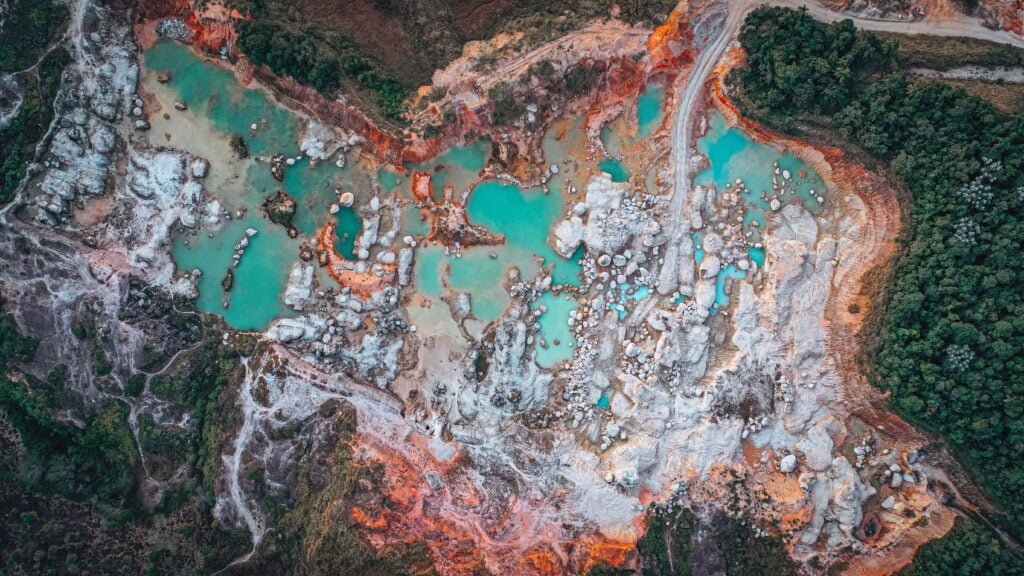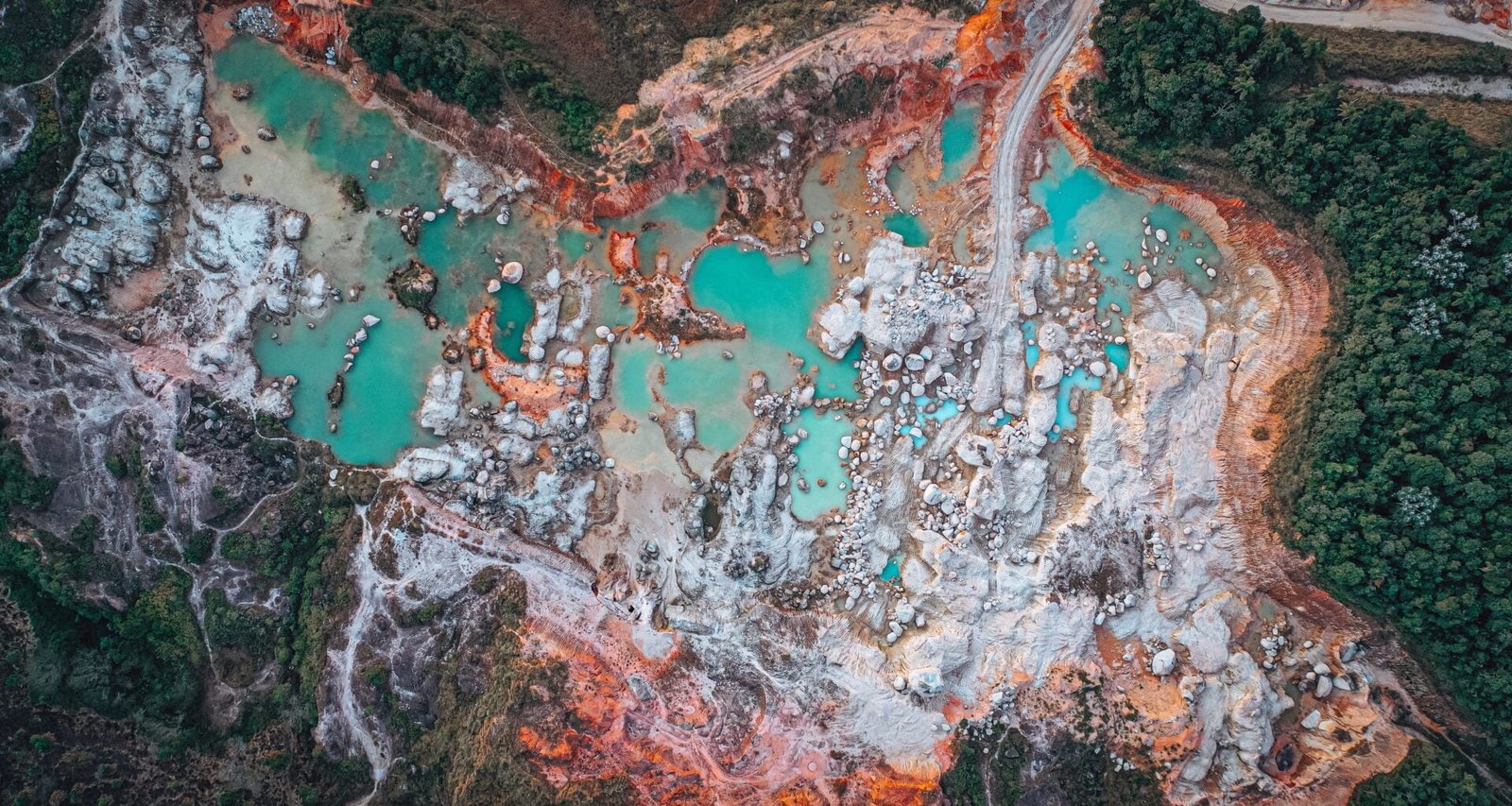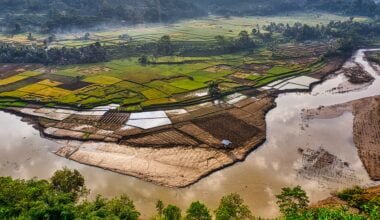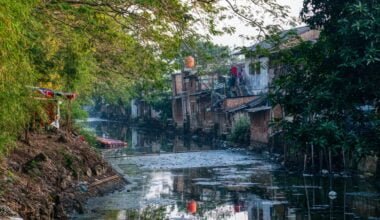Though unseen, groundwater is vital to ecosystems and humans. A freshwater supply for consumption, irrigation, and industry is underground. Groundwater pollution is a big concern despite its tranquility. Continuous contamination from this subsurface resource threatens human health, biodiversity, and sustainable development. Industrial activity and agriculture may release hazardous substances into groundwater.
The complicated origins, convoluted paths, and urgent need for effective management measures of groundwater contamination are revealed as we investigate. To keep clean groundwater flowing, we must understand this underlying danger.

The Importance of Groundwater
Groundwater is an essential natural resource. This massive subterranean freshwater reservoir supports ecosystems, agriculture, and human settlements worldwide, sometimes hidden from view. As a stable drinking water supply, it serves rural and urban people. Groundwater is recommended for drinkable water due to its accessibility and purity. Its impact on global food security is substantial. Groundwater-fed irrigation helps agricultural economies and weather patterns by growing crops in desert locations.
Groundwater is important for ecology beyond its immediate applications. It helps rivers and streams flow, particularly when surface water is scarce. This constant flow protects aquatic environments, boosting biodiversity and providing homes for numerous species. Groundwater is vital, but contamination is a big issue. As we learn about groundwater pollution, conserving this vital resource is not just about water security but also about ecosystems, livelihoods, and future generations.
What is Groundwater Pollution?
Contaminants penetrating subterranean aquifers that store and deliver freshwater cause subtle groundwater contamination. This happens when pesticides, heavy metals, pathogens, and nutrients leak into the soil and combine with the groundwater. Groundwater contamination, unlike surface water bodies, is typically buried, making identification and prevention difficult.
Groundwater pollution may result from several human activities. Industrial waste dumping, pesticide-laden agricultural runoff, leaky subterranean storage tanks, and landfill seepage degrade this unique resource. Pollutants in groundwater may spread across large regions, impacting drinking water quality and ecosystems that depend on it.
Effective groundwater contamination cleanup and prevention require understanding its intricacies. As we investigate the causes, effects, and remedies, we realize the necessity of tackling this hidden issue to preserve clean and healthy groundwater for future generations.
Sources of Contamination
Groundwater contamination comes from several sources, adding to the underlying pollution problem. These industrial, agricultural, domestic, and natural sources threaten this vital resource.
1. Industries
- They release harmful chemicals and garbage into the environment. Leaks, accidents, and improper disposal may release heavy metals, solvents, and poisons into the soil and groundwater.
2. Agriculture
- Agriculture runoff may pollute groundwater through intensive use of fertilizers, pesticides, and herbicides. Farm manure and animal waste may also provide nutrients and microorganisms.
3. Landfills
- Mixed home and industrial garbage might be dangerous. Rainwater percolates through the landfill and carries toxins down.
4. Septic Systems
- Poorly managed septic systems may leak bacteria, viruses, and other diseases into soil and groundwater.
5. Underground Storage Tanks
- Leaking gasoline, oil, or chemical storage tanks may pollute groundwater and soil.
6. Natural Sources
- Mineral deposits may release arsenic and radon into groundwater, along with human activity.
Developing effective preventative and repair solutions requires understanding these varied pollution sources. Addressing these pollution sources may help preserve groundwater for future generations.
Consequences for Ecosystems and Public Health
Groundwater contamination has far-reaching effects on ecosystems and public health. Once toxins enter subterranean aquifers, a chain reaction of negative impacts disrupts delicate ecological balances and endangers human health.
1. Aquatic ecosystem disruption
- Groundwater contamination degrades aquatic ecosystems. Water chemistry changes from contaminants affect aquatic life and biodiversity. Fish and amphibians that need clean water may become extinct.
2. Contaminated Drinking Water
- This is the most pressing issue. Pumping dirty groundwater into public and private water systems exposes people to several toxins. This may cause digestive, neurological, and chronic ailments.
3. Groundwater Pollution
- Polluted groundwater may alter soil composition and fertility. The soil may absorb groundwater contaminants, reducing crop quality and perhaps entering the food chain.
4. Economic Effect
- Treating polluted groundwater and supplying clean water may be costly for communities and governments. Contaminated water may reduce production in agriculture and industry.
5. Health hazards
- Groundwater contamination poses several health hazards. Acute, chronic, and cancerous disorders may result from drinking water contamination with hazardous chemicals and bacteria.
These effects emphasize the need to address groundwater contamination. Ecosystems and populations dependent on this hidden resource must be protected by appropriate monitoring, prevention, and cleanup measures.
Tracing the Underground Pathways
Understanding the complex subsurface paths of contaminants is crucial to understanding groundwater contamination. Contaminants travel a convoluted path through the soil due to geological and hydrological reasons. The subsurface flow of pollutants is affected by soil permeability, porosity, and rock fractures or conduits. Contaminants move via slow, diffuse channels and quicker, concentrated pathways, making their behavior unpredictable.
Groundwater pollution may last decades or millennia, depending on the contaminant and groundwater movement. This delayed manifestation might make pollution source identification and action harder.
Complex computer simulations and hydrogeological models are needed to trace subsurface routes. Experts may identify pollution hotspots and anticipate future pollutant distribution by researching contaminants over time. We learn from these hidden channels that groundwater contamination is complicated and requires a multifaceted strategy to control. Effective measures must include pollution prevention, cleanup, and a detailed knowledge of geological and hydrological processes that transfer contaminants under our feet.
Mitigation and Prevention Strategies
Groundwater contamination requires aggressive mitigation and prevention to combat its insidious menace. These solutions handle contamination from detecting pollution sources to protecting subsurface aquifers and creating clean water supplies.
1. Source Control
- Pollution management is essential to soil contamination. For soil quality and environmental health, industries should use eco-friendly methods, efficient waste disposal, and leakage controls. These procedures are the best protection against pollution’s detrimental effects on our soil resources.
2. Sustainable Agriculture
- Precision farming, chemical reduction, and organic farming may reduce agricultural runoff‘s influence on groundwater quality. These methods reduce groundwater contamination and promote sustainable agriculture, protecting the environment and water supplies.
3. Waste Management
- Safe hazardous waste disposal, septic system maintenance, and landfill closure and remediation reduce groundwater contamination. These activities preserve groundwater quality, ecosystems, and public health.
4. Rules
- Enforcing chemical and pollutant use limits in groundwater recharge zones helps reduce pollution. Groundwater quality and sustainability may be improved through prudent actions and reducing dangerous contaminants.
5. Remediation Technologies
- Pump-and-treat systems, permeable reactive barriers, and bioremediation may clean up polluted groundwater. These novel approaches remove or neutralize contaminants to improve groundwater quality and reduce contamination hazards.
6. Monitoring
- Establishing a strong groundwater monitoring network helps discover pollution early. This proactive method ensures groundwater quality and reduces environmental and public health hazards by responding quickly and preventing.
7. Public Awareness and Education
- Environmental stewardship is promoted via groundwater preservation, water conservation, and pollution prevention education. This understanding helps people to protect groundwater supplies for future generations.
8. Collaboration
- Comprehensive groundwater pollution plans at local, regional, and global levels need collaboration between government agencies, corporations, researchers, and local populations. These stakeholders can prevent, monitor, and reduce groundwater contamination by sharing resources, skills, and viewpoints, protecting ecosystems and societies.
These various techniques may help civilizations confront groundwater pollution’s hidden hazards. As we move toward sustainable water management, we must remember that protecting this critical resource demands proactive steps and a commitment to preserve clean groundwater for future generations.
Technological Innovations for Detection and Monitoring
Technology has revolutionized groundwater contamination detection and monitoring. These advancements help understand pollution patterns and allow faster, more focused actions. Satellite imaging and aerial surveys help estimate risk by showing land use changes and probable pollution sources. Experts use complex computer models to forecast pollution paths and develop efficient mitigation techniques. Ground-penetrating radar and electrical resistivity imaging provide subsurface insights that help locate pollution plumes. Sensor networks with real-time data transmission monitor groundwater quality and intervene quickly when abnormalities are discovered.
Nanotechnology and isotope tracers improve monitoring precision by tracking contaminated sources and enabling novel cleanup methods. Data analytics and machine learning can identify trends in massive datasets, alerting authorities to pollution outbreaks. These modern technologies reveal the hidden dangers of groundwater contamination and provide us with the skills to prevent it, protecting our water supplies and ecosystem.
Community Engagement and Awareness
Community involvement and awareness are crucial to groundwater contamination prevention. We can protect this vital resource by promoting shared responsibility and awareness among people and communities. Educational programs teach people about groundwater’s importance and the risks of pollution. Public outreach methods like seminars and meetings allow community people to express issues, exchange experiences, and explore solutions.
Awareness leads to good behavioral changes including less chemical use, proper waste disposal, and water conservation. Local leaders and groups advocate for water quality rules, adding influence. Hands-on collaborative initiatives and indigenous knowledge help conserve groundwater holistically. Community involvement and awareness initiatives unite communities, stakeholders, and knowledgeable citizens to fight groundwater pollution’s hidden threats.
Safeguarding the Future: Preserving Clean Groundwater
The need to preserve clean groundwater supplies resonates across time and boundaries. Despite rising environmental worries, preserving this hidden gem has become a global effort. The most important methods are water conservation, precision agriculture to reduce chemical pollution, and contamination prevention. Holistic urban and rural design protects against pollution. Preventing hazards by including groundwater recharge and pollution-prone zones in development frameworks. Strong rules and regulations make it necessary to improve controls over dangerous compounds near groundwater sources and handle industrial and municipal waste responsibly.
Advanced groundwater monitoring systems and cleanup methods are key to fighting pollution. Modern techniques improve our ability to identify pollution and coordinate precise responses. However, community participation and education remain important. We instill stewardship in future generations by raising knowledge and environmental consciousness. In this globalized society, groundwater protection requires worldwide cooperation. Cross-border pollution may be addressed via research, data sharing, and collaboration.
Conclusion
As we finish exploring the hidden threats of groundwater contamination, it becomes clear that preserving this vital resource requires constant dedication and comprehensive effort. All life depends on groundwater, which is hidden under the Earth’s surface. However, pollution threatens this lifeline. We have studied groundwater pollution from its human and natural causes through its devastating effects on ecosystems and public health. We’ve discovered the complicated subsurface channels pollutants follow and the technical and community-driven measures that may reduce and avoid pollution.
Protecting the future and clean groundwater requires cross-boundary collaboration. Policy improvements, technical advancements, education programs, and group commitment from people, communities, companies, and governments are needed. Together, we can guarantee that future generations inherit a world where groundwater pollution’s hidden threats have been investigated and defeated. Let this investigation inspire a future with pure, unpolluted groundwater that sustains life and prosperity.








